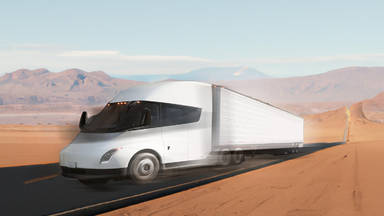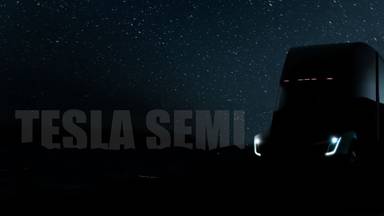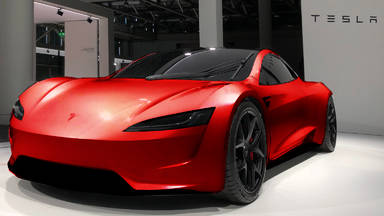
Solar power has made great strides over the past several years but to this day it is really not practical on a large scale. Currently, the average solar panel is able to produce up to 850 kiloWatt-hours per month, per 400 square feet. This does not sound too bad until you realize that we consume 22.3 trillion kilowatts of electricity every single year. It means that if we were to rely on solar today, we would have to cover 876 billion square feet with solar cells. Clearly, that's not viable today, but here's how Tesla is rapidly rewriting the fate of solar.
Tesla is making solar power more accessible to the average person. Tesla solar panels can be bought outright financed or most importantly rented. Renting solar panels is only available in a couple of states right now. But this is likely the most attractive solution to the average person. Tesla covers the installation and maintenance cost of the panels and you'd only be paying the monthly subscription cost, which starts at $50 per month.
However, you will have to purchase a Tesla Powerwall which does cost several thousand dollars, but nonetheless, this does still wipe out the thirty to forty thousand dollars that the solar panels would have run you. So it is still much more accessible than paying for full solar installation outright.
On top of this, the best part about Tesla solar renting model is that there is no cancellation fee. If you cancel, they will simply turn off your unit. The only time you will be running into cancellation costs is if you actually want them to remove the solar panels from your house, which would cost you $2500.
Aside from being much more accessible, Tesla's offerings are generally more than sufficient for the average US household. As we all know, US households are power consumers. The average US household consumes 877 kiloWatt-hours of electricity per month. Tesla's top offering produces up to 59 kiloWatt-hours per day. So, the average person should have no problem completely relying on solar power from an electricity perspective.
Additionally, Tesla solar panels are quite efficient as well, with an efficiency rating of 19.6 percent. And Tesla solar panels hold up pretty well against heat, with a temperature coefficient of 0.39 percent which means that the panel's efficiency is only reduced by 0.39 percent for every degree celsius above 25. Though this is great, it is really not the big deal as there are plenty of competitors who have solar panels that are just as powerful and efficient, if not more.
The real area in which Tesla is innovating is with your Powerwall. At this point in time, generating power using solar panels is not the biggest concern. The real issue when it comes to solar energy is, of course, reliability.
Obviously, solar panels need light in order to work, and they will not work at night nor when the sun is blocked or obscured by clouds. As a result, storing excess energy produced by solar panels when they are generating electricity is just as important as actually generating sufficient energy in the first place. The Tesla Powerwall is able to store up to 13.5 kiloWatt-hours. Each pair of these Powerwalls would be capable of running the average US household for a full 24 hours on their own.
Anyway, moving on we have cost savings for commercial customers. After all, the industrial sector accounts for 32 of all US energy consumption. The average manufacturing facility consumes 95.1 kiloWatt-hours of electricity per square foot, per year. Considering that we are talking about Tesla, let's use one of their Gigafactories, as an example, Tesla's upcoming Gigafactory in Texas covers a massive 2000 acres. Assuming that only 10 percent of this will become operational space, we have 8.7 million square feet of factory space, which would indicate that Tesla would need approximately 827 million kiloWatt-hours of electricity every year, or about 2.3 million kiloWatt-hours per day.
Tesla's largest solar panels cover 960 square feet and produce 40 to 60 kiloWatt-hours per day. We will call it 50 kiloWatt-hours per day. Elon Musk has always dreamed about covering the entire roof of Gigafactories with solar panels but they have never actually done this before. So they will only end up covering half of the operational space with solar panels, which can accommodate for 4500 extra large solar panels. Together, these will generate 225,000 kiloWatt-hours per day or a respectable 10% of the entire factory's power needs.
However, these 4500 solar panels will cost an eye watering 150 million. In this scenario there is no need for Powerwalls, as the factory consumes more energy than the solar panels produce, meaning that there will be no need to actually store any energy.
The average electricity rate in the US is 13.31 cents per kWh, but we will assume that large consumers pay less than this at about 10 cents per kiloWatt-hour. This indicates that the solar panels will be saving the Tesla Gigafactory $22,500 in electricity costs every single day.
At this rate the solar panels will pay for themselves in just 18.26 years, or within 20 years. Considering that Tesla provides a 25-year warranty with their solar panels, and that Tesla's warranty claims that their solar panels will still be at least 80% as productive in 25 years, 20 years is well within the lifespan of their solar panels, and everything after 20 years is pure profit, which is big savings when we are looking at commercial customers.
The only issue with going on such a venture is that it will take decades for such a model to even become net positive. But it seems like Tesla is not only ready for such a journey, but more importantly they are also financially capable of handling such adventure without facing a constant threat of death.
Thus, at the end of the day, solar energy is cheaper than regular electricity over the long term, and this advantage will likely only widen as we move forward. However, although many savvy businesses and governments will understand and value the long-term cost savings of solar, this is unlikely to be as clear to the average customer who require low cost of entry and reliability to make the jump. A renting service which may also cover the Powerwall in the future is very attractive, when converting the masses to solar. Fortunately, Tesla solar renting model along with their Powerwalls may be exactly what the average consumer is looking for, and what Tesla needs to grow their solar business to become larger than their EV business propelling our future into clean energy.









